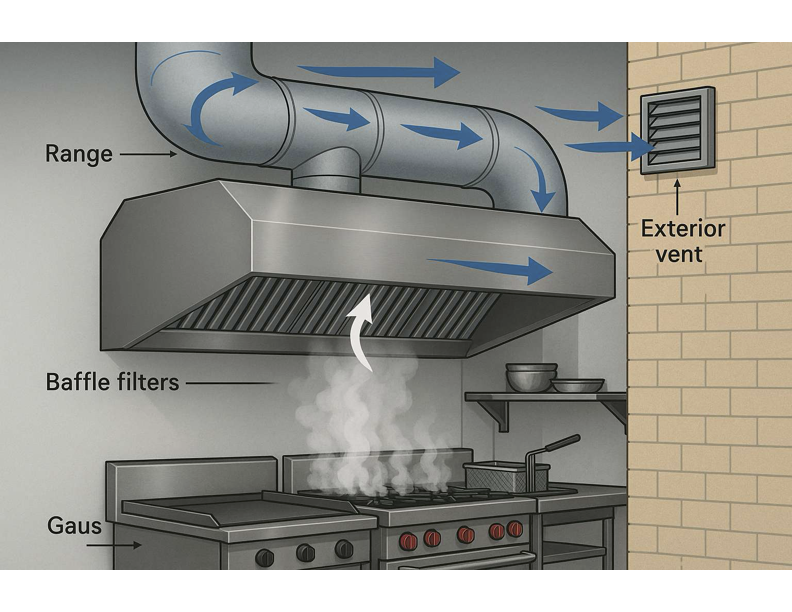A commercial kitchen without proper ventilation is a disaster waiting to happen. Between the smoke, heat, grease, and odors, things can spiral quickly if your system isn’t up to code—or up to the task. Whether you’re designing a new kitchen or retrofitting an old one, your ventilation system plays a key role in safety, air quality, and operational efficiency.
Why Ventilation Matters
Commercial kitchens generate a lot more than food. Every minute, they produce smoke, steam, grease particles, and combustion gases. If these don’t get vented out properly, you end up with:
-
Poor air quality for your staff
-
Overheating and stress on equipment
-
Grease buildup (a major fire hazard)
-
Violations of health and fire safety codes
A good ventilation system keeps the air clean, the space cool, and the risk low.
The Core Components
There are three main parts to any commercial kitchen ventilation system:
-
Exhaust Hood (or Canopy): Captures heat, smoke, and grease-laden air directly above cooking equipment. Hoods come in two main types:
-
Type I (for grease and smoke)
-
Type II (for heat and moisture, no grease)
-
-
Ductwork: Connects the hood to the outdoors, guiding exhaust out of the building. Must be made from materials that can handle heat and be cleaned easily.
-
Exhaust Fan: Pulls contaminated air through the ducts and expels it outside. Often roof-mounted.
-
Make-Up Air Unit (MUA): Replaces the air being exhausted with fresh, tempered air. Without this, the kitchen ends up under negative pressure, which can pull in contaminants from other areas.
Key Considerations
-
Local Codes: Always check your city or county requirements. Ventilation rules vary by location and kitchen size.
-
Grease Management: Systems must include grease filters or baffles. These help capture grease before it enters the ducts.
-
Air Balance: The goal is to maintain neutral or slightly positive pressure in the kitchen. Too much exhaust and not enough make-up air causes problems.
-
Noise: Fans and airflows can be loud. Sound-reducing features are worth considering if your kitchen is near a dining area.
-
Maintenance: Ventilation systems need regular cleaning and inspection. Grease buildup is a leading cause of kitchen fires.
Energy Efficiency and Smart Controls
Modern systems now include energy-efficient fans, demand-controlled ventilation (DCV), and smart thermostats that adjust based on real-time conditions. Investing in a smart system can lower utility bills and improve comfort.
Final Thoughts
Don’t treat ventilation as an afterthought. It’s not just about clearing smoke—it’s about safety, compliance, and keeping your team comfortable. Work with licensed professionals, stick to code, and maintain your system regularly.
A clean, well-ventilated kitchen is a productive kitchen.

